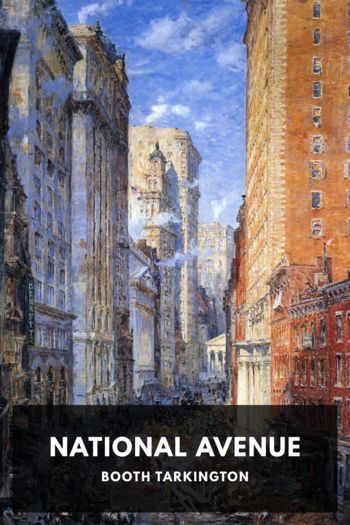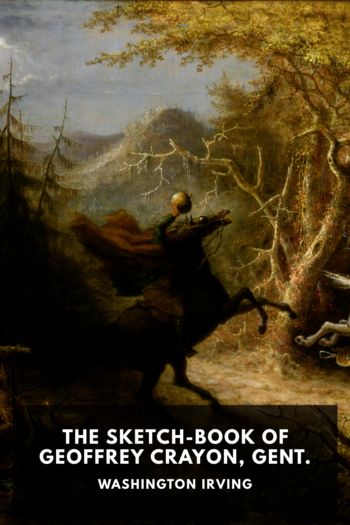Enchanted Evenings:The Broadway Musical from 'Show Boat' to Sondheim and Lloyd Webber by Block, Geoffrey (good story books to read .TXT) 📕

Read free book «Enchanted Evenings:The Broadway Musical from 'Show Boat' to Sondheim and Lloyd Webber by Block, Geoffrey (good story books to read .TXT) 📕» - read online or download for free at americanlibrarybooks.com
Read book online «Enchanted Evenings:The Broadway Musical from 'Show Boat' to Sondheim and Lloyd Webber by Block, Geoffrey (good story books to read .TXT) 📕». Author - Block, Geoffrey
52. Sondheim, “The Musical Theater,” 228–250.
53. In Laurents’s revised version of Do I Hear a Waltz? performed at the George Street Playhouse in New Jersey in 2000 and the Pasadena Playhouse in 2001 (Fynsworth Alley CD 302 062 156 2), the reprise of “Take the Moment” was deleted and replaced by “Everybody Loves Leona,” which had been discarded from the original production.
54. Sondheim (with Prince), “Author and Director,” 365.
55. “City on Fire!” is first heard at the beginning of No. 26 and repeated after a short reprise of “Kiss Me.” It returns in No. 27, after the Searching music “Not While I’m Around” and again after the Beggar Woman’s “Alms … alms.”
56. The eight songs that are not reprised in the final sequence are “The Worst Pies in London,” “Green Finch and Linnet Bird,” “Johanna” (Anthony’s version), “Pirelli’s Miracle Elixir,” “Wait,” and “Ladies in Their Sensitivities” from act I and “God, That’s Good!” and “Parlor Songs” from act II.
57. Horowitz, Sondheim on Music, 143.
58. Ibid., 144.
59. In “Sondheim Dismembers ‘Sweeney,’” Green cites Love Me Tonight, Under the Roofs of Paris, The Smiling Lieutenant, “and a couple of the MGMS” (none mentioned by name) among the short list of Sondheim’s favorite film musicals.
60. Several useful discussions on the Sweeney Todd adaptation include Jesse Green, “Sondheim Dismembers ‘Sweeney’”; Mark Salisbury, Sweeney Todd: The Demon Barber of Fleet Street (n.c.: Titan Books, n.d.); and Andrew Buchman, “Tim Burton’s Cinematic Sweeney Todd (2007),” an unpublished paper presented at the Symposium on the American Musical held at the University of Washington, April 11, 2008. I am grateful to Andrew Buchman for allowing me to reap the benefits of this paper. The special features in the 2-Disc Special Edition of Sweeney Todd (DreamWorks Pictures 2007) also provide considerable information about the film (see especially Sondheim, “Interview with Sondheim,” 2007).
61. The soundtrack includes the music and lyrics attached to the Beggar Woman’s coarse sexual solicitations that follow her plaintive solicitations for money, which Anthony gives her before he asks about the residents of the house.
62. Horowitz, Sondheim on Music, 136–37.
63. Green, “Sondheim Dismembers ‘Sweeney’” (“Slashing the Score”), quotation by Green.
64. Sweeney Todd, 2-Disc Special Edition, Special Feature, “Musical Mayhem: Sondheim’s Sweeney Todd,” DreamWorks Pictures 2007.
65. Another excellent example of this approach occurs in the film version of “A Glamorous Life,” in which Frederika sings about her mother; it is accompanied by images of her mother, Desiree, played by Elizabeth Taylor, who does not sing in this number.
66. DreamWorks 2007.
67. The published literature on Sondheim offers numerous and often valuable discussions of Sunday in the Park with George (see especially Banfield, Sondheim’s Broadway Musicals, 343–79; Stephen Citron, Sondheim & Lloyd-Webber, 289–99; Gordon, Art Isn’t Easy, 262–300; Martin Gottfried, Sondheim, 155–66; Horowitz, Sondheim on Music, 91–98; Scott Miller, Deconstructing Harold Hill, 153–89); Meryle Secrest, Stephen Sondheim, pp. 327–41. I am grateful to Larry Starr for making available to me in typescript the penetrating critical overview of Sunday he presented at the Annual Meeting of the Sonneck Society for American Music (now the Society for American Music), Nashville, Tennessee, April 1989, “The Broadway Musical as a Critique of Modernist Culture, or Sunday in the Park with Sondheim.”
68. The motive of “Putting It Together” (Ex. 15.3a) adds one additional long note to the horn call. Although neither of the two new long notes of the former are as long as the single long note in the horn call, the connection between these motives might be discernible even to those who disdain the idea of organic connections.
69. See Banfield, Sondheim’s Broadway Musicals, 364–79, especially 375–79.
70. Sondheim, “Interview with Stephen Sondheim,” 1988, 236. For a recent example of the opposite view, see John Lahr’s acerbic and unsympathetic portrait of the work in his review of the 2008 revival with its reference to “the strained, deadly second act” (Lahr, “The Haunted,” The New Yorker, March 3, 2008, 85).
71. Michiko Kakutani, “Beyond Happily Ever After,” New York Times Magazine, August 30, 1987, 30, 76.
72. For more on Follies, see Chapin, Everything Was Possible, passim; Hirsch, Harold Prince, 93–105; Ilson, Harold Prince, 177–97; Mandelbaum, “‘A Chorus Line,’” 66–78; Ethan Mordden, One More Kiss, 34–47; Prince, Contradictions, 158–70; Sondheim, “The Musical Theater,” 231–32; and Zadan, Sondheim & Co., 135–53.
73. Another post–Rodgers and Hammerstein musical, Candide, underwent considerable literary and musical alterations between 1956 and 1989. See Andrew Porter, “Candide: An Introduction,” notes to the 1989 recording, conducted by Leonard Bernstein, Deutsche Grammophon, 429–73401.
74. The two librettos of The Girls Upstairs (from among the alleged thirteen) housed in the Theater Collection of the New York Public Library (Restricted Material #5870 [first draft] and Restricted material #2624 [second draft]) for the most part substantiate Prince’s recollection. Seven of the twenty-two numbers in the 1971 Follies (in addition to the “Prologue”) can be traced to these pre-Follies versions; four of these songs appear in Restricted Material #5870. The New York Public Library also houses two drafts of Follies, one dated September 1970 (Restricted Material #2625) and the other January 2, 1971 (NCOF+73–1867).
75. Ilson, Harold Prince, 180.
76. Many, if not all, of the discarded Follies songs have been recorded on Follies: The Complete Recording (1998) (CD: TVT 1020–2) 2-disc set and A Collector’s Sondheim (1985) (CD: RCD3–5480) 3-disc set.
77. Sondheim discusses the artistic limitations of “Can That Boy Foxtrot!” in Sondheim, “Theater Lyrics,” 87–88.
78. The resolution of a triadic figure to the fifth of its triad offers a striking parallel (if not influence) in the culminating transformation of the principal motive in the first movement of Beethoven’s Symphony No. 3 (the “Eroica”), first heard toward the end of the development and increasingly prominent in the recapitulation and coda. See the commentary by J. Peter Burkholder in Norton Anthology of Western Music. Volume 2: Classic to Twentieth Century, 5th ed., ed. by Burkholder and Claude V. Palisca (New York: W. W. Norton), 281–82.
79. Mandelbaum, “‘A Chorus Line,’” 70–71.
80. Zadan, Sondheim & Co., 143.
81. Prince, Contradictions, 163.
82. In honor





Comments (0)